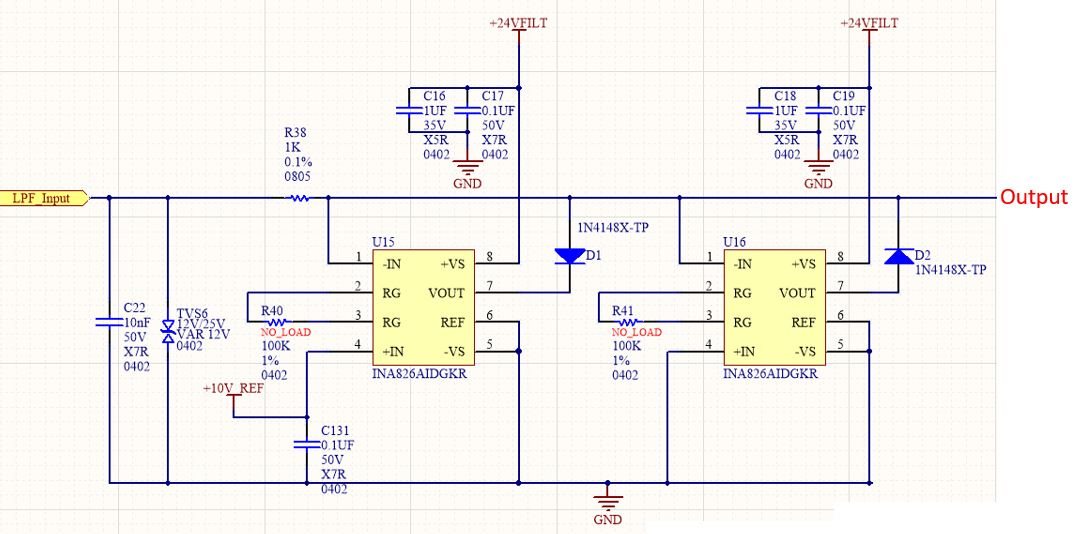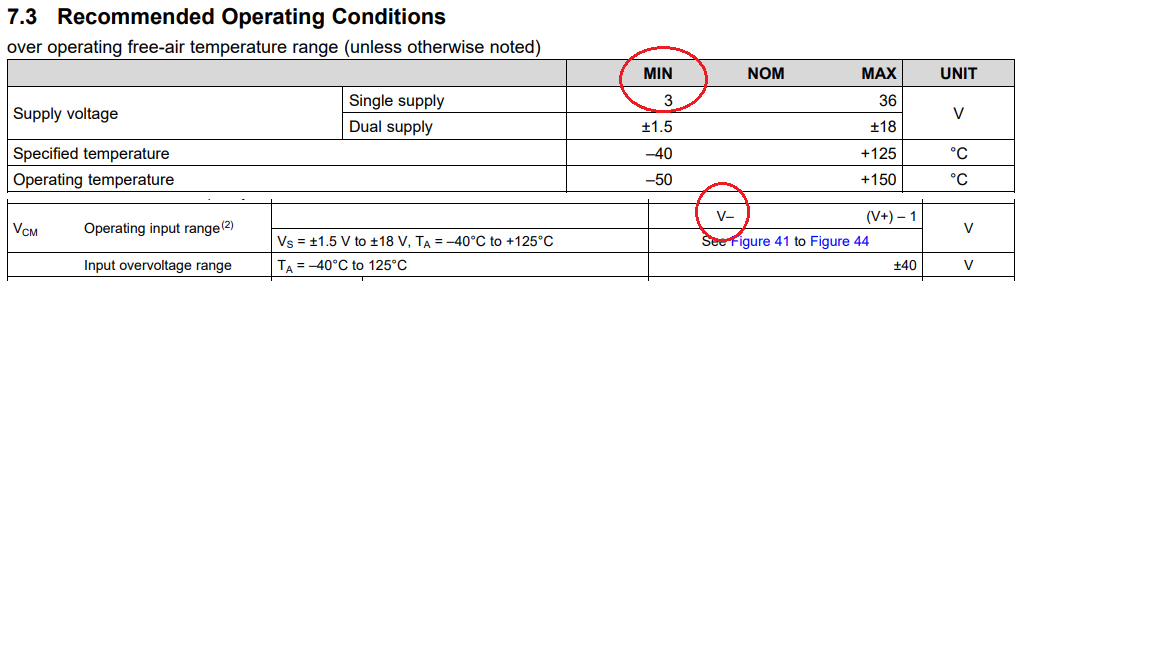Issue: the circuit below uses x2 INA826AIDGKR. It should follow any +/- input DC voltage to between 0-10Vs, and clip any voltage outside that range. Anything above 10V should be locked at 10V and anything below 0V should be locked at 0.
Instead, we are seeing the upper clipping occur at 5.47V.
Notes:
R40 and R41 are NOT populated
Pin 4 has our 10V reference voltage.
The first part of the circuit is supposed to track (follow) any input voltage below 10V, and clip any voltage above 10V. Instead, this section clips correctly tacks any voltage below 5.47V, then incorrectly clips higher voltages at 5.47V. We have not taken any test data on the negative clipping section yet.



